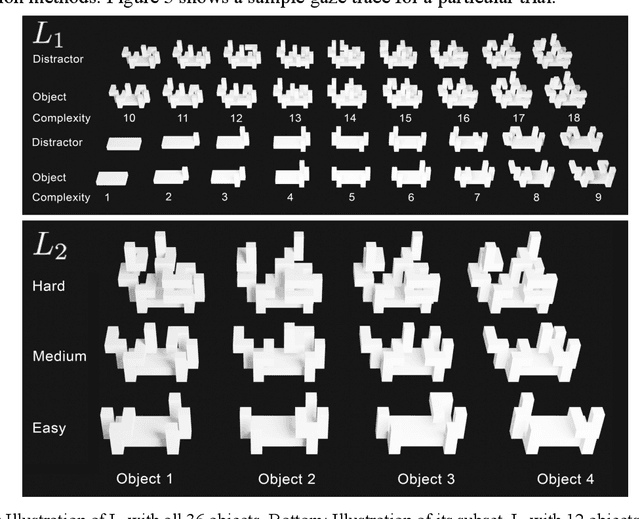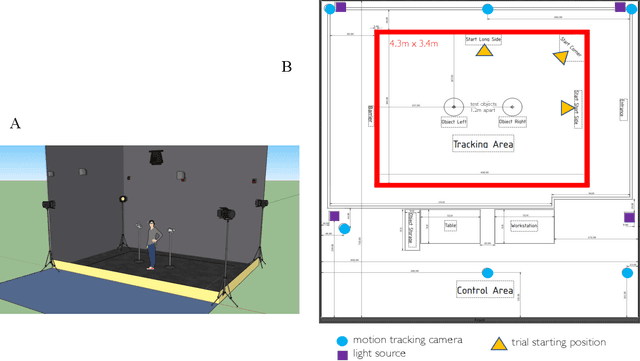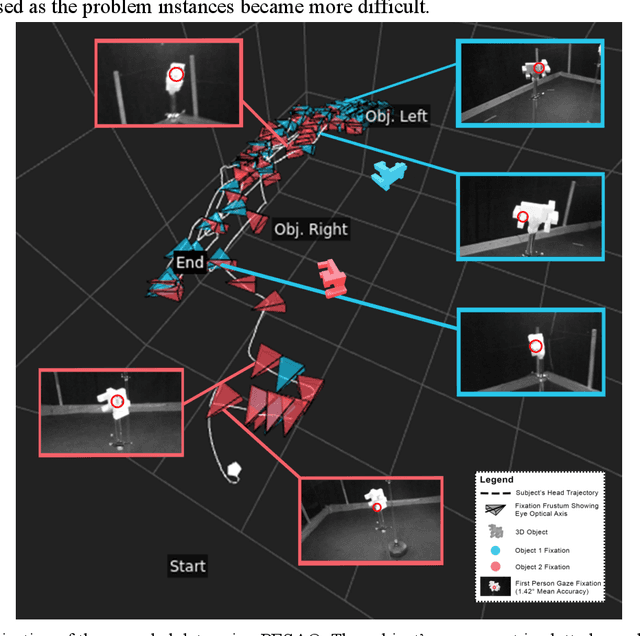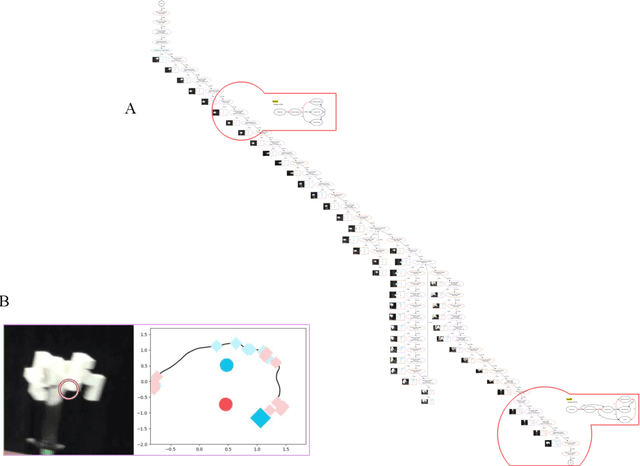Active Observer Visual Problem-Solving Methods are Dynamically Hypothesized, Deployed and Tested
Paper and Code
Aug 18, 2021



The STAR architecture was designed to test the value of the full Selective Tuning model of visual attention for complex real-world visuospatial tasks and behaviors. However, knowledge of how humans solve such tasks in 3D as active observers is lean. We thus devised a novel experimental setup and examined such behavior. We discovered that humans exhibit a variety of problem-solving strategies whose breadth and complexity are surprising and not easily handled by current methodologies. It is apparent that solution methods are dynamically composed by hypothesizing sequences of actions, testing them, and if they fail, trying different ones. The importance of active observation is striking as is the lack of any learning effect. These results inform our Cognitive Program representation of STAR extending its relevance to real-world tasks.
 Add to Chrome
Add to Chrome Add to Firefox
Add to Firefox Add to Edge
Add to Edge